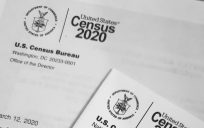![]()
In the five years since the passage of the Plain Writing Act, guidance about how to enact it has become more readily available. The Act requires that each Federal agency develop a plain language plan, post it online, and train their employees in its implementation. In reality, many agencies have deferred to the guidance offered at PlainLanguage.gov, and in 2010, that site was relatively bereft of information.
Today, the site provides much more than it did then. Unfortunately, it can still be difficult to navigate. It’s poorly organized and difficult to search. Of course, this is what happens when the government passes a law and then doesn’t set aside any funding to enact it. The people involved in the plain language movement have been doing this work largely on a volunteer basis for decades, so we’re very grateful that the resources exist at all.
In this post, I hope to acclimate you to a few of the resources that are housed at PlainLanguage.gov so that you will learn to integrate the guidance into your own work as well as to navigate the site on your own.
Historians and legal experts will want to download the act, which you can find on the homepage in the right hand sidebar under Plain Language: It’s the Law. It’s a short act, written as plainly as the law can be written. Read for yourself what it requires. Just be aware that it was supplemented by an Executive Order outlining the conditions under which regulations can also be written plainly.
Every government employee will want to download the Federal Plain Language Guidelines. The Guidelines are a practical document that you can use to improve your writing. In a little over 100 pages, they outline a set of best practices, such as considering your audience, writing in short paragraphs with topic sentences, and uncovering hidden verbs.
Under Tips and Tools, there are two checklists that some writers may find useful. One is for ensuring that documents have been written in plain language, and the other is for websites. The document checklist is especially helpful because it includes hyperlinks to micro-articles about each topic.
Also on the Tips and Tools page is a Word Suggestions list, containing multiple articles and references about how to clarify your diction.
Advanced writers may want to search Plain Language Guidance and Manuals, which lists several references, including how to write effective letters, how to craft effective headings, and how to use plain language on websites or in presentations.
Finally, the Resources page includes a list of books, articles, and journals about plain language.
Government writing is complicated by lots of different factors. Writing plainly, unfortunately, does not come naturally. It’s a skill that has be honed. I suggest that writers set aside time at least quarterly to peruse the tools that PlainLanguage.gov curates.
Set aside 45 minutes on your calendar. Dig into the website. Make note of one practice you want to incorporate in the next quarter. That’s how writers improve.
Michelle Baker is the Conservation Writing Pro. She teaches environmental scientists how to write more clearly. And she edits scientific journal articles and APA dissertations. Contact her for all your writing training and editing needs: michelle@conservationwritingpro.com
Michelle Baker is part of the GovLoop Featured Blogger program, where we feature blog posts by government voices from all across the country (and world!). To see more Featured Blogger posts, click here.





Thanks for sharing these helpful resources! I will definitely be checking these out!
Absolutely, Katarina. Happy to help
Thank you for providing resources on this important topic. I recently attended a webinar for a federal funding opportunity. One of the presenters used the word “penultimate”, a word that I’ve read but never heard anyone use! I thought immediately of the the plain language requirements.
Ouch! Definitely time for a refresher
I cannot get the Plain Language Guidelines to load — upon clicking the link, the screen is just dark — no copy. Are they available anywhere else?
Yes, you can download the PDF directly from the Plain Language.gov site: http://www.plainlanguage.gov/howto/guidelines/FederalPLGuidelines/FederalPLGuidelines.pdf